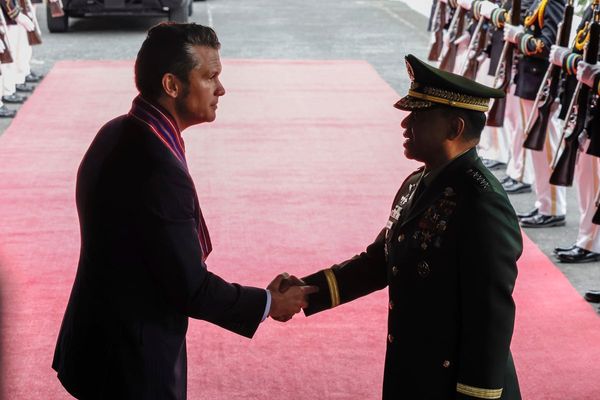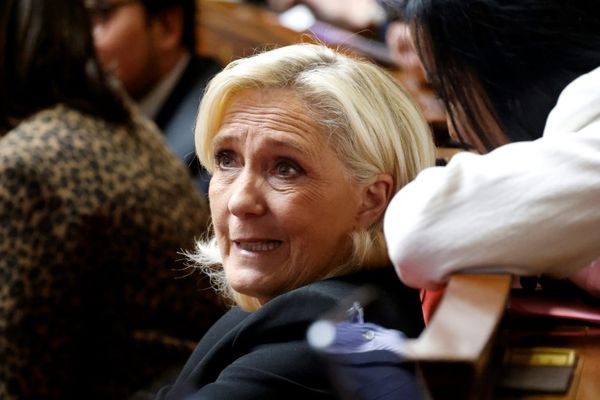Ambassador-at-Large of the U.S. Office of International Religious Freedom (IRF) Rashad Hussain on Friday, commenting on the hijab-related controversy in Karnataka, said the hijab ban in schools violate religious freedom. He added the ban “stigmatise and marginalise” women and girls. In response, Spokesperson at the India’s Ministry of External Affairs, Arindam Bagchi said motivated comments on the country’s internal issues were not welcome.
In the past, the IRF has also commented on the protests pertaining to the Citizenship Amendment Act (CAA), revoking provisions of the Article 370, and cow vigilantism in India. On the CAA protests, the then Ambassador-at-Large Sam Brownback had stated that he hoped the government would “abide by its constitutional commitments, including on religious freedom.”
Also read: Hijab row | Motivated comments on India’s internal issues not welcome: MEA
The office’s annual report on the state of religious freedom in varied countries also mention of cow vigilantism, anti-conversion laws and religious conversions in the context of India.
What is U.S. Office of International Religious Freedom?
The U.S. Office of International Religious Freedom (IRF) monitors religiously motivated abuses, harassment, and discrimination globally. Additionally, it recommends, develops and implements policies and programs to address the mentioned concerns, its website states.
The IRF also mentions that it assists emerging democracies globally to implement freedom of religion and conscience. Further, identify and denounce regimes that persecute on the basis of religion and assist NGOs globally in promoting religious freedom. It falls under the purview of the U.S. Department of State.
In 1998, the then-U.S. President Bill Clinton signed the International Religious Freedom Act (IRFA, 1998) into law. It was passed unanimously by both the House of Representatives and the Senate. The Act led to the creation of the Office of International Religious Freedom headed by an Ambassador-at-Large within the State Department of the U.S. government, and the establishment of a U.S. Commission on International Religious Freedom (USCIRF).
Also read: Hijab ban violates religious freedom: U.S. on Karnataka hijab issue
What are the Annual Reports on Religious Freedom?
Both IRF and USCIRF prepare and send to the Congress an Annual Report on Religious Freedom. It enumerates the states of religious freedom in varied countries, alleged violations of religious freedom by foreign governments and actions taken by the United States to support religious freedom in those geographies. Accordingly, they designate a country either as ‘Country of Particular Concern’ (CPC) or log them in the ‘Special Watch List’ (SWL).
The President’s authority to designate CPCs is delegated to the Secretary of State.
‘Countries of Particular Concern’ includes countries that have “engaged in or tolerated particularly severe violations of religious freedom” during the reporting period. The IRFA defines particularly severe violations of religious freedom as those which are systematic, ongoing and involves egregious violations of religious freedom, for example, torture and prolonged detention without charges, among others.
The ‘Special Watch List’ includes countries not deemed to meet all of the CPC criteria but found to be engaging or tolerating severe violations of religious freedom. This category was established in 2016.
Why two reports?
USCIRF is an independent, bipartisan federal government entity while the IRF is part of the U.S. State Department. The former’s report holds a statutory obligation.
The Commission’s annual report, which suggests certain countries be designated as CPCs, has to be compulsorily considered by the Executive Branch. It makes policy recommendations to both the executive and the legislative branches of the government. Further, it elaborates on the effectiveness of the State Department in promoting religious freedom globally.
What all countries are designated as CPCs and SWLs?
According to the IRF, Burma, China, Eritrea, Iran, Democratic People’s Republic of Korea, Nigeria, Saudi Arabia, Pakistan, Tajikistan and Turkmenistan have been designated as CPCs.
Comoros, Nicaragua, Cuba and Russia have been enlisted in the SWL.
Stance on India
The U.S. CIRF in its Annual Report 2021 had called for India to be designated as a CPC. It asked for imposing targeted sanctions on individuals and entities, responsible for violation of religious freedom, by means of freezing their assets and barring their entry into the United States. To elaborate its case, the commission pointed to the anti-CAA protests in Shaheen Bagh (Delhi) and Assam, the violence in Delhi, anti-conversion laws and the dilution of provisions laid out in Article 370. The commission accused the Government of “stifling civil society and forcing religious and human rights organisations, including those advocating for religious freedom, to shut down” by amending the Foreign Contribution Regulation Act (FCRA) in 2020.
It suggested that the U.S. Congress should raise religious concerns about religious freedom during the U.S.-India bilateral relationship and make their concerns known through hearings, briefings, letters, and congressional delegations.







